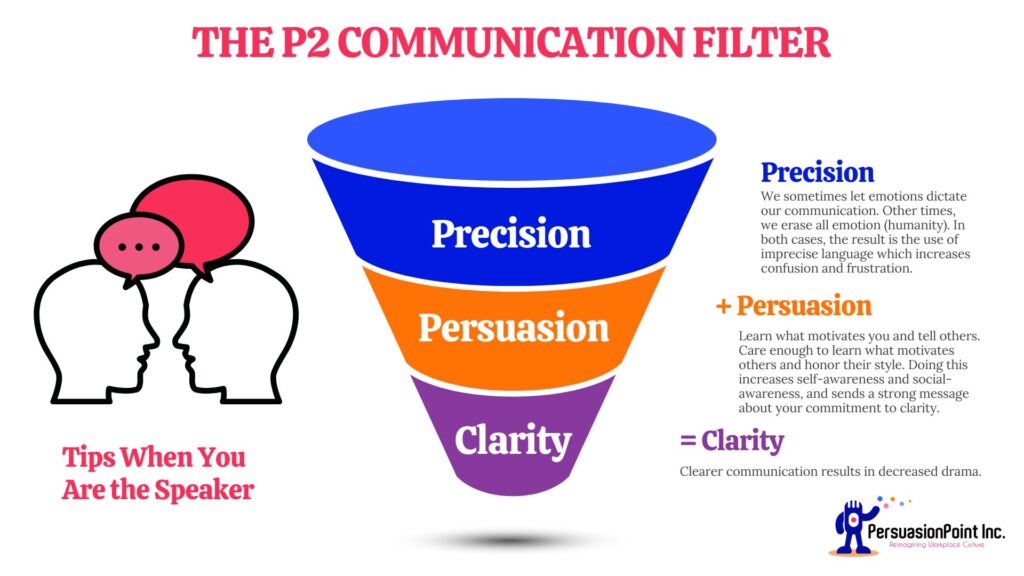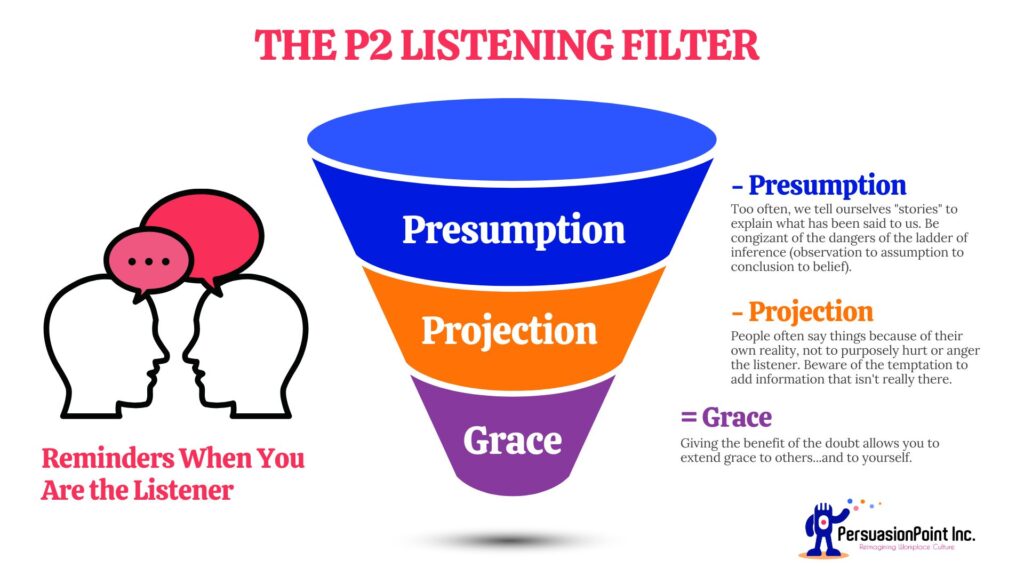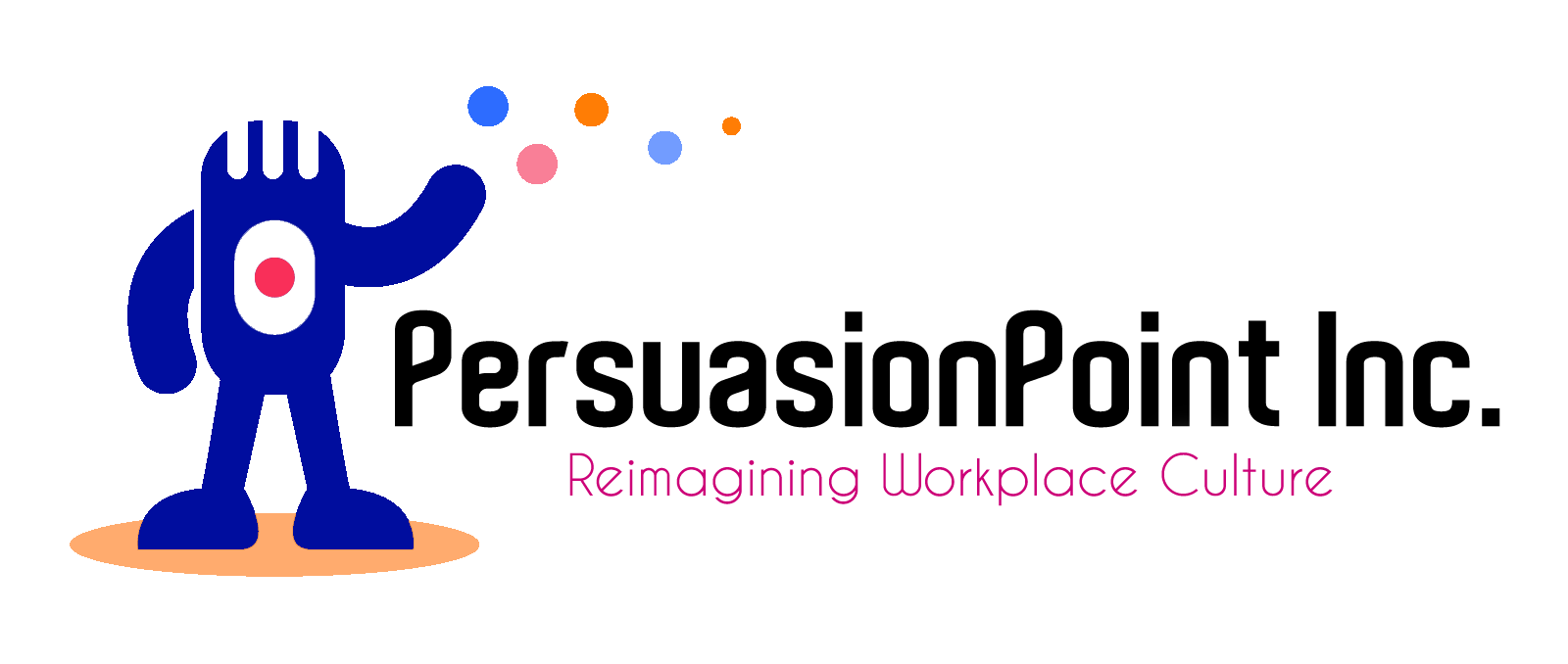Clear communication isn’t just a “nice to have.” For leaders, it’s a daily act of culture-shaping, and it’s the first line of defense against workplace drama.
When communication breaks down, it doesn’t just cause frustration. It creates confusion, exclusion, and mistrust. And when that happens, even high-performing teams start to unravel.
The good news? These breakdowns are often predictable…and preventable. The key is equipping leaders with tools that emphasize precision, emotional intelligence, and trust.
Why Communication Breakdowns Are So Common, Even Among “Good Communicators”
Most professionals think they’re decent communicators. But the truth is, we’re rarely taught how to handle the hard stuff—especially in the workplace.
Here’s what makes communication tricky:
– We default to comfort zones: avoidance, authority, or vagueness.
– We fear being misunderstood or misinterpreted.
– We aren’t taught how to talk about taboo topics like exclusion, bias, or power.
The result? People say nothing, or they say something they regret. Either way, the fallout can ripple across teams and cultures.
The P2 Communication Filter: Precision + Persuasion = Clarity
To communicate clearly, leaders need more than confidence, they need a filter. One that helps them be both direct and respectful. That’s where the P2 Communication Filter comes in.
When you’re the speaker, use:
Precision
– Be specific. Avoid vague language and sweeping generalizations.
– Describe actions, not assumptions.
Persuasion
– Understand your audience. Tailor your message to their needs and motivations.
– Make it easier to say yes than no.
Clarity reduces confusion and prevents defensiveness before it starts.

The P2 Listening Filter: From Presumption to Grace
Listening well is just as important as speaking clearly. Too often, we listen to respond, defend, or “fix.” Instead, aim to listen with grace, and extend the benefit of the doubt.
When you’re the listener, focus on:
– Presumption: Notice when you’re making assumptions about intent.
– Projection: Be careful not to add your own fears, baggage, or bias to what you’re hearing.
– Grace: Give space for humanity. People speak from their own reality, not always with perfect words.
These small shifts create psychological safety. They lower the temperature. They build connection.

The Real Cost of Poor Communication
Communication failures don’t just lead to misunderstandings—they can damage entire cultures. When people feel judged, excluded, or invisible, they disengage. When trust erodes, conflict escalates.
Here’s what poor communication often leads to:
– Gossip or venting instead of resolution
– Passive-aggressive behavior or stonewalling
– Assumptions turning into full-blown narratives
– Loss of morale, productivity, and psychological safety
Conversation Starters That Work (Even in Tough Moments)
Every leader has to navigate difficult conversations. Here are some ways to open them with clarity and emotional intelligence:
– “I want to be clear and respectful—can we talk about something I’ve been reflecting on?”
– “I know emotions can run high. I’d like us to have this conversation with mutual understanding in mind.”
– “I’m committed to creating a positive work environment. Let’s work through what’s getting in the way.”
The key is preparation. Think ahead. Choose your words carefully. Practice. Even if it feels awkward at first.
Leadership Is Culture-Shaping, One Conversation at a Time
Whether you’re giving feedback, navigating change, or dealing with tension between team members, how you communicate matters.
The best leaders don’t just talk. They listen. They clarify. They model courage and calm.
If you want to create a culture of trust and reduce workplace drama, start by transforming your conversations.
Conclusion: Want to Go Deeper?
If this resonates with you or your team, I offer customized workshops on compelling workplace communication based on real-world dynamics, neuroscience, and cultural awareness.
[Let’s connect about a session for your organization →](#)
Additional Resources for Workplace Communication
- Are you making your employees miserable?
- Inc.: Here’s How Great Leaders Listen to and Understand Their Team
- Brené Brown on Empathy: Bettering communication as speaker and listener is both internal and external. In this beautifully animated RSA Short, Dr Brené Brown reminds us that we can only create a genuine empathic connection if we are brave enough to really get in touch with our own fragilities.

About PersuasionPoint
Patti Perez is founder and CEO of PersuasionPoint, a modern-day consulting firm dedicated to teaching leaders and teams how to create and sustain healthy, equitable and inclusive workplace cultures. Patti is the best-selling, award-winning author of The Drama-Free Workplace (Wiley 2019), and draws from the book’s themes to provide practical, authentic, and action-oriented solutions to help companies achieve true diversity and equity, and to create environments of belonging and inclusion.
Patti and the team provide services specifically tailored to address workplace struggles with recruiting, retaining, promoting and fully valuing diverse employees – including consulting, leadership training, and boot camps for diverse attorneys who are emerging leaders.
Contact Patti here or email her directly at Patti@PersuasionPoint.com.
